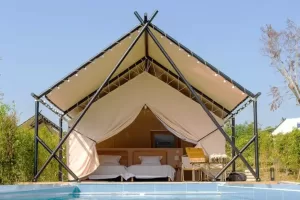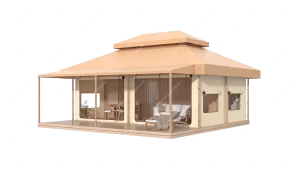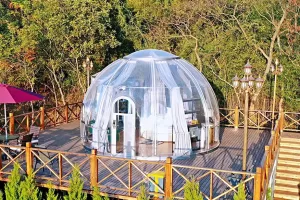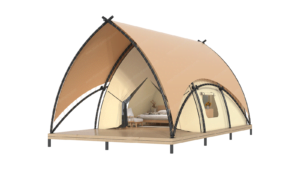Introduction
Glamping, a portmanteau of ‘glamorous’ and ‘camping’, has revolutionized the concept of outdoor stays, offering a luxurious alternative to traditional camping. This article delves into the nuanced differences between glamping tents and camping tents, exploring each option’s unique features, benefits, and ideal use cases.
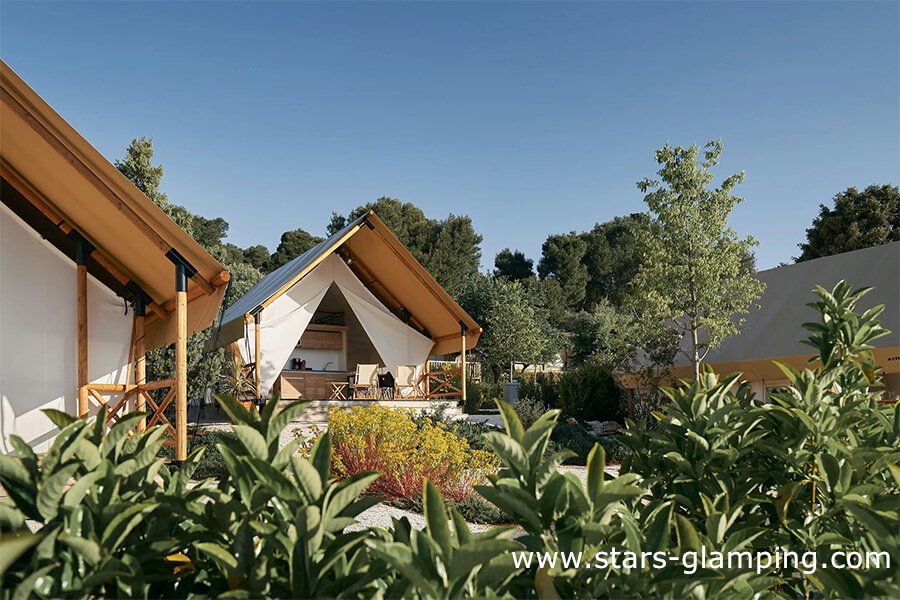
The Evolution of Outdoor Accommodation
Camping has long been a beloved pastime, tracing back to the days of exploratory expeditions. In contrast, glamping is a relatively new phenomenon that blends the escapism of camping with the comforts of modern living. This evolution reflects a growing desire for immersive nature experiences without sacrificing comfort.
Design and Structure
Glamping tents, such as those produced by Stars Glamping Tent, boast robust materials like high-grade PVC and steel frames, offering enhanced durability and weather resistance. Camping tents, while also designed for outdoor use, typically utilize lighter materials like nylon or polyester, prioritizing portability over longevity.
Comfort and Amenities
Glamping tents often resemble luxury hotel rooms, with ample interior space, real beds, and sometimes even air conditioning and heating. They cater to travelers seeking a “home away from home” experience in nature. Camping tents, though less equipped, offer a more authentic, “back to basics” outdoor experience.

Ease of Setup
Glamping tents often require more time and effort to set up, given their larger size and more complex structures. In contrast, camping tents are designed for ease and speed of assembly, making them ideal for hikers and travelers on the move.
Cost Comparison
The initial investment in a glamping tent is typically higher due to its size and the quality of materials. However, its durability can offer better long-term value. Camping tents are more budget-friendly but may need more frequent replacements.
Environmental Impact
Sustainability is a key consideration in outdoor accommodations. Glamping tents, particularly those from eco-conscious manufacturers, often incorporate sustainable practices and materials. Camping tents, being smaller and requiring less material, generally have a smaller environmental footprint.
Ideal Use Cases
Glamping tents are perfect for extended stays, luxury camping sites, and events, offering comfort and style. Camping tents are ideal for backpacking, festivals, and short-term outdoor adventures where mobility and simplicity are key.
Audience Preferences
Surveys indicate a growing preference for glamping among those who desire a blend of nature and comfort. Traditional campers, however, still value the simplicity and authenticity of camping tents.
The Future of Outdoor Accommodation
The outdoor accommodation sector is rapidly evolving, with advancements in eco-friendly materials and smart technology. This progress promises to further blur the lines between traditional camping and luxury glamping.
Conclusion and Call to Action
In conclusion, both glamping and camping tents offer unique experiences tailored to different preferences and needs. As outdoor enthusiasts, Stars Glamping Tent invites readers to explore our range of high-quality glamping tents, perfect for resorts, campgrounds, and Airbnb hosts. Contact us for more information about our products and how they can enhance your outdoor accommodation offerings.

